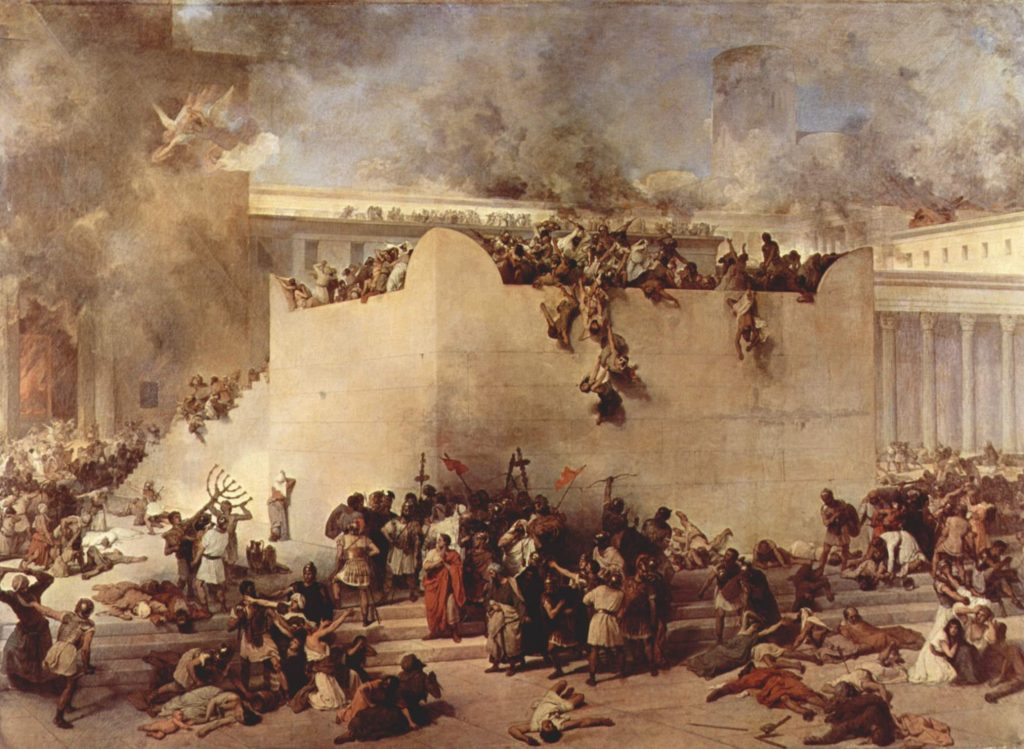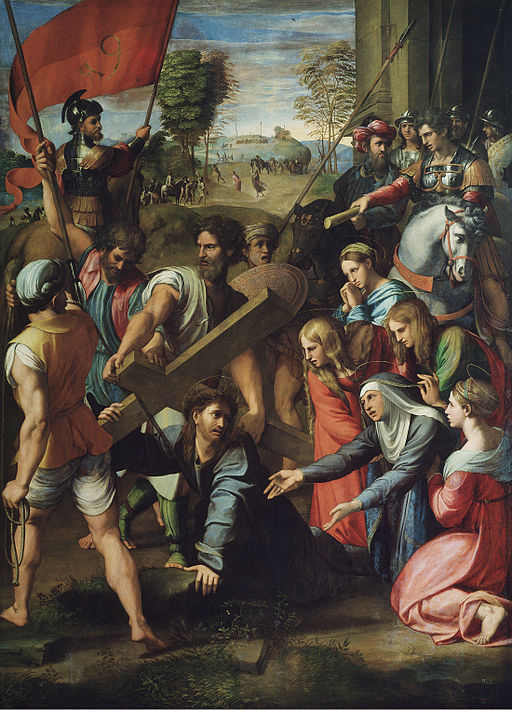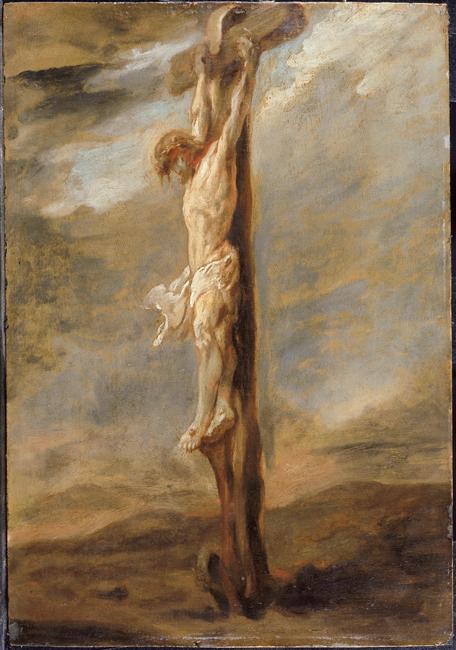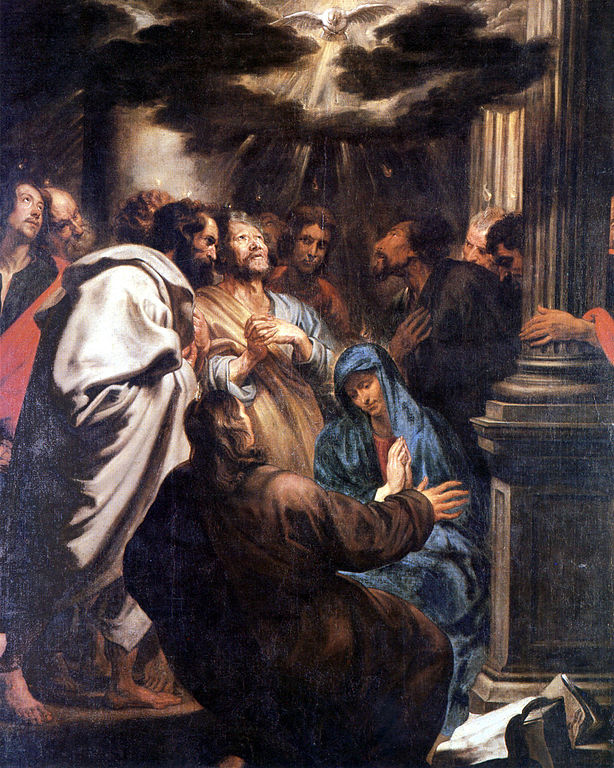Dear Brothers and Sisters,

Addressing a group of Jewish leaders who were persecuting him, Jesus made a revealing declaration concerning the Scriptures: “It is these that testify about me” (John 5:39 NASB). This truth was confirmed years later in this proclamation from an angel of the Lord: “The testimony of Jesus is the spirit of prophecy” (Revelation 19:10 NASB).
Unfortunately, the Jewish leaders in Jesus’ day turned a blind eye to these truths concerning Scripture and Jesus’ identity as the Son of God. Instead, they focused on the religious rituals of the Temple of Jerusalem, which they then abused for their own benefit. As a result, they lost sight of the God of Israel and failed to recognize the fulfillment of prophecy in the person and ministry of Jesus, the promised Messiah.
The Temple of Jerusalem was truly magnificent—Jewish historian and scholar Flavius Josephus noted that its shimmering white marble exterior, accented with gold, was awe-inspiring. Imagine then the people’s surprise and shock when they heard Jesus prophesy that this glorious Temple, the center of old covenant worship, would be utterly destroyed—a destruction signaling that God’s plan for the salvation of all humanity, apart from the Temple, was right on schedule.

(public domain via Wikimedia Commons)
Jesus didn’t seem particularly impressed with Jerusalem’s Temple—and for good reason. First, he knew that God’s glory is far greater than any building of human construction, no matter how grand. Second, Jesus knew that the Temple would be replaced—a fact he shared with his disciples. Third, he saw that the Temple no longer served the purpose for which it had been constructed, saying, “Is it not written, ‘My house shall be called a house of prayer for all the nations’? But you have made it a den of robbers” (Mark 11:17). Note also what is recorded in Matthew’s Gospel:
Jesus left the temple and was walking away when his disciples came up to him to call his attention to its buildings. “Do you see all these things?” he asked. “I tell you the truth, not one stone here will be left on another; every one will be thrown down.” (Matt. 24:2, and see Luke 21:6)
On two occasions Jesus foretold the coming destruction of Jerusalem and its Temple. The first occasion was his triumphal entry into the city as people laid their clothes on the ground before him—a customary way to honor someone of great importance. Note Luke’s account:
As he approached Jerusalem and saw the city, he wept over it and said, “If you, even you, had only known on this day what would bring you peace—but now it is hidden from your eyes. The days will come upon you when your enemies will build an embankment against you and encircle you and hem you in on every side. They will dash you to the ground, you and the children within your walls. They will not leave one stone on another, because you did not recognize the time of God’s coming to you.” (Luke 19:41-44)
The second occasion was when Jesus predicted Jerusalem’s destruction while being led through the city to the place of his crucifixion. The streets were packed with people—both his enemies and his enthusiastic followers. Jesus foretold what would happen to the city, the Temple and the people as a result of the destruction about to be meted out by the Romans. Note again Luke’s account:
A large number of people followed him, including women who mourned and wailed for him. Jesus turned and said to them, “Daughters of Jerusalem, do not weep for me; weep for yourselves and for your children. For the time will come when you will say, ‘Blessed are the childless women, the wombs that never bore and the breasts that never nursed!’ Then they will say to the mountains, ‘Fall on us!’ and to the hills, ‘Cover us!'” (Luke 23:27-30)

(public domain via Wikimedia Commons)
History tells us that Jesus’ prophecy was fulfilled some 40 years after he made these statements. In A.D. 66, the Jewish inhabitants of Judea rebelled against the Romans and then in A.D. 70, the Temple was demolished, much of Jerusalem was razed, and the people suffered horribly—all as Jesus had, with great sorrow, predicted.

(public domain via Wikimedia Commons)
When Jesus cried out on the cross, “It is finished,” he not only was referring to the completion of his atoning work of redemption, but also declaring that the old covenant (Israel’s life and worship as defined by the Law of Moses) had served the purpose for which God gave it. With Jesus’ death, resurrection, ascension, and sending of the Spirit, the work that God, in and through Christ and by the Spirit, did to reconcile all humanity to himself was accomplished, thus bringing to pass the fulfillment of Jeremiah’s prophecy:
“The days are coming,” declares the Lord, “when I will make a new covenant with the people of Israel and with the people of Judah. It will not be like the covenant that I made with their ancestors when I took them by the hand to lead them out of Egypt, because they broke my covenant, though I was a husband to them,” declares the Lord. “This is the covenant I will make with the people of Israel after that time,” declares the Lord. “I will put my law in their minds, and write it on their hearts. I will be their God, and they will be my people. And no longer will they teach their neighbor or say to one another, ‘Know the Lord,’ because all will know me, from the least of them to the greatest,” declares the Lord. “For I will forgive their iniquity, and I will remember their sin no more.” (Jeremiah 31:31-34)
In saying, “It is finished,” Jesus was declaring the good news of the inauguration of the new covenant. The old had gone, the new had come. Sin had been nailed to the cross, and God’s purposes of grace were fulfilled by the reconciling atonement of Christ that made possible the deeper work of the Holy Spirit to transform our hearts and minds. Such transformation gives us a share in the regenerated human nature renewed in Jesus Christ. What was promised and signified in the old covenant thus now found its fulfillment in the new (renewed) covenant in Christ.

(public domain via Wikimedia Commons)
As the apostle Paul taught, Christ (who is the new covenant) accomplished for us what the Law of Moses (the old covenant) could not do nor was it intended to do:
What then are we to say? Gentiles, who did not strive for righteousness, have attained it, that is, righteousness through faith; but Israel, who did strive for the righteousness that is based on the law, did not succeed in fulfilling that law. Why not? Because they did not strive for it on the basis of faith, but as if it were based on works. They have stumbled over the stumbling stone…” (Romans 9:30-32)
It was sin and pride that made the Pharisees of Jesus’ day and the Judaizers of Paul’s day think that their own religious efforts could accomplish what only God himself, by grace, in and through Jesus, is able to achieve for us. Approaching the old covenant as they did (on the basis of works-righteousness) was a distortion brought about by the power of sin. Grace and faith were certainly not absent from the old covenant, but as God knew she would, Israel turned her back on that grace. Thus the new (renewed) covenant was, from the beginning, envisioned as the fulfillment of the old covenant—a fulfillment worked out in the person and work of Jesus and through the Spirit, rescuing humankind from pride and the power of sin, and forging a new depth of relationship for all humanity, throughout the world, in a relationship that leads to eternal life in the presence of the Trinity.
So as to mark the magnitude of what was occurring on Calvary’s cross, shortly after Jesus cried out, “It is finished,” an earthquake shook the city of Jerusalem, leading to four events that rocked human existence, and fulfilled the prophecies concerning the destruction of Jerusalem, the Temple and the inauguration of the new covenant:
- The veil in the Temple, blocking access to the Holy of Holies, was torn from top to bottom
- Tombs were opened and several dead people were raised to life
- Jesus was acknowledged by bystanders to be the Son of God
- The old covenant gave way to the new covenant
In saying “it is finished,” Jesus was declaring that God’s presence would no longer dwell in a building made with human hands, or in a particular location within that building (the Holy of Holies). Rather, as Paul noted to the church at Corinth, God now dwells in a non-physical temple, formed by the Spirit:
Don’t you know that you yourselves are God’s temple and that God’s Spirit dwells in your midst? If anyone destroys God’s temple, God will destroy that person; for God’s temple is sacred, and you together are that temple. (1 Cor. 3:16-17, also see 2 Cor. 6:16)
The apostle Peter put it this way:
As you come to him, the living Stone—rejected by humans but chosen by God and precious to him—you also, like living stones, are being built into a spiritual house to be a holy priesthood, offering spiritual sacrifices acceptable to God through Jesus Christ…. You are a chosen people, a royal priesthood, a holy nation, God’s special possession, that you may declare the praises of him who called you out of darkness into his wonderful light. (1 Pet. 2:4-5, 9)
On the basis of Jesus’ earthly ministry, God made a way to live in and among us, making us holy as we, by the Spirit, share in Christ’s own sanctified and regenerated human nature (Titus 3:5-7). Further, all our time is set aside and being made holy as we live under the new covenant, which means participating, by the Spirit, with Jesus in his continuing ministry. Whether we are at our jobs at work or engaged in recreation, we are citizens of heaven—living the new life in Christ—and so we shall live until either our death or Jesus’ return.
Dear ones, the old order is finished—in Christ we are new creations, called and equipped by the Spirit to be on mission with Jesus to live and share the good news. Let us be about our Father’s business!
Sharing in Jesus’ life, by the Spirit, with you,
Joseph Tkach



“It will NOT be like the covenant that I made with their ancestors…”. This is a vitally important revelation pointing to the radically different nature of the New Covenant. At times some have understood the New Covenant to be sort of a refurbished and “more binding” upgrade of the Old dispensation.
We have been falsely accused to teach a replacement theology. Thanks for underscoring that we in fact teach a fulfillment theology. The New Covenant is Jesus, who is the fulfillment, and not some legalistic steroid pumped version of the Mosaic code.
We are indeed new creations!
I appreciate the clarity regarding the basics of our denominational positions.
Thanks joe for another excellent summary of the transition from Old to New. But how long do we need to continue to deal with this issue? I support and trust you as always. JR
Joe, I agree with Jim and Hazel. I don’t sense any concerns about this among the membership or leadership. I sometimes think that there must be some undercurrents I am unaware of that you are addressing. Those of us who are here are New Covenant believers. Thanks again for the leadership you and the others are providing at this important time of our journey.
Jim Roberts and Jim Lee: I appreciate (and relate with) what you both say in wondering why we continue talking about something as old (in our experience) as the old covenant-new covenant discussion. I would note, however, that circulating among some (many?) of our members (and Christians elsewhere) is the misconception that there are two *separate* covenants, with the old covenant being a covenant of works (and thus legalistic) and the new covenant being a covenant of grace. I don’t think that concept is biblically sound.
TF Torrance (among others, including Calvin) emphasizes that the covenant-making God made *one covenant* with humanity that has two principal *forms* (old and new). This one covenant is about grace from start to finish because it’s about what God, by grace, has done on behalf of humanity. From that perspective, the new covenant is rightly understood to be the “renewed” covenant.
I think there is more we might need to write as a bit of a course correction and clarification in our theological understanding of the nature of God as covenant-making God, and of the one covenant that he has made with humanity in various forms down through salvation history leading to its ultimate and final form/fulfillment in Jesus Christ by the Spirit.
Hi Ted,
Thanks very much for the elucidating additional comments. I guess that perhaps the term “renewed” when referring to the “New Covenant” can cause some confusion if not understood in the proper context and intention. Guess this is where a careful exposition is both necessary and helpful. My concern is that the “New Covenant” could be misunderstood to be in essence a revamped legalistic version of the written Mosaic Code. This was pretty much what many in our fellowship thought and taught in the past. In Jesus, we have come to see, the Covenant takes on a much deeper relational and truly life giving focus. This is what I meant when I used the expression a “radically different nature” (sorry if my choice of words caused some irritation). The commands and regulations of the Mosaic Code in whatever form could never give anyone eternal life. Just wanted to clarify my own statement.
Thanks Santiago for both of your comments. I understand (and relate to) the concerns you raise. Some in our movement erred by trying to frame the new covenant as merely a “tweaking” of the old–it is far more radical than that, and so the distinctions between the old and new forms of the one covenant must be emphasized.
Those who have tried to frame the distinctions as fairly minor are (typically) making two mistakes. First, their understanding of the old covenant itself is flawed—they are viewing it as *a system of works-righteousness*—but that is what the Jews in Jesus’ day turned it into (and for which Jesus castigated them in no uncertain terms). This was NOT the purpose of the old covenant as given by God to Israel. This was the mistake HWA made in his approach to basing Christian living on the Law of Moses (the old covenant). He misinterpreted and thus misapplied the Law.
The second error, which extends from and amplifies the first, is to think that the Law of Moses (given by God to Israel to define her family life, work and worship in the Levant), was also given by God to govern the life and worship of the church under the new (renewed) covenant. Any efforts to transfer of the Law of Moses out of its old covenant context into the new covenant context is both unwarranted and an affront to what God, in Christ, and by the Spirit, established for the new form of the covenant in the entirely new situation of world evangelism.
“I would note, however, that circulating among some (many?) of our members (and Christians elsewhere) is the misconception that there are two *separate* covenants, with the old covenant being a covenant of works (and thus legalistic) and the new covenant being a covenant of grace. I don’t think that concept is biblically sound.”
I’ll weigh in and say that I too agree with Jim and Hazel. In 8 years of pastoring GCI members, I have never met anyone who thinks in the misconceived way regarding God’s covenant.(above)In fact throughout my life as a Christian I’ve never met or heard about any other Christian who referred to or spoke about a covenant of works and a covenant of grace.
In fact, the two main issue I deal with doctrinally are general and personal eschatology.
I agree with the principles of what has been written here on this topic but there are some rough edges maybe. I do not see support for the idea that there is one covenant with several instantiations. Why would Paul refer to the earlier as “Old” and the later as “New” and the declare that the earlier had passed away without reference to an over-arching and unchanging superordinate covenant. Certainly there is a conceptual connection between the OT and the NT. But regarding the latter as a “renewal” of the former because of a common foundation in concept seems to me to be a literary device rather than good theology.
This is somewhat alarming because one of the greatest botches I have seen in religion stems from the failure to make a distinction between the two contrasting covenants. This separation is confusing to many people and it was to me. People who are caught in this error understand that the OT is holy and the NT is holy. So by a presumed alchemy if you mix two holy things together, you must still have something that is holy. When in fact mixing the OT and the NT is an unholy conflation that is condemned by scripture.
While I agree with the fundamental conclusions, I would still like to see some exegesis that supports the “one covenant with many instantiations” idea.
Thanks everyone for your comments on this article. There are many issues to consider, having largely to do with the points and continuity and discontinuity between the old and new covenants (and considering the related question about the place/duration of the Law of Moses given to Israel under the old covenant). GCI, since 1996/6 has taught a great deal about these issues, and though we are not changing what we’ve taught these 20+ years, there is, perhaps, a need for some clarification on points that are often misunderstood. We’ve asked Gary Deddo to write and article on this topic what we’ll publish here in Weekly Update – probably in the May 3 issue, so stay tuned!